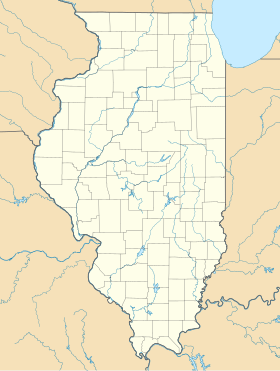Fisk Generating Station
| Fisk Generating Station | |
|---|---|
 |
|
| Country | United States |
| Location | Pilsen neighborhood of Chicago |
| Coordinates | 41°51′01″N 87°39′12″W / 41.85028°N 87.65333°WCoordinates: 41°51′01″N 87°39′12″W / 41.85028°N 87.65333°W |
| Status | Decommissioned |
| Commission date | 1968 (current units) |
| Decommission date | 2012 |
| Owner(s) | Midwest Generation |
| Thermal power station | |
| Primary fuel | Subbituminous coal, kerosene |
| Type | Steam (coal), Combustion turbine (kerosene) |
| Cooling source | Chicago River |
| Power generation | |
| Nameplate capacity | 590 MW |
The Fisk Generating Station, also known as Fisk Street Generating Station or Fisk Station is an inactive medium-size, coal-fired electric generating station located at 1111 West Cermak Road in the Pilsen neighborhood of Chicago, Illinois. It is sited near the south branch of the Chicago River to provide access to water for steam and barge traffic for coal, but closed in 2012.
Fisk Street Station went into service October 2, 1903. It was built by the predecessor to Commonwealth Edison, Chicago Edison Company, whose Chairman was Samuel Insull and Chief Engineer was Frederick Sargent. The older Harrison Street Station, built on the west bank of the Chicago River with reciprocating engines and condensing units capable of 16,200 kilowatts, was overloaded less than six years after the station went into service in 1894. Fisk's original Unit 1 was an 11,000 horsepower - 5000 kilowatt (or 5 million watt abbreviated 5 MW) steam turbo-generator built by the General Electric Company, whose Chairman Charles A. Coffin initially balked at the size requested by Insull. It was far larger than any other steam turbine built up to that date, the next biggest being a 1,500 kilowatt Westinghouse unit installed by the Hartford Electric Light Company around 1900. General Electric had manufactured some 600 kilowatt turbine units by that time. Insull and Coffin reached a compromise; GE would assume the manufacturing risk and Chicago Edison would pay for the installation. Insull told Coffin: "I will make no claim against you..all you have to do is take the apparatus out and throw it in the junk pile."
Fisk Station’s mechanical success was immediately apparent, as the new unit produced twice as much power as any steam engine ever built. The turbines achieved 80% energy efficiency, twice Chicago Edison’s previous reciprocating unit technology at Harrison Street. They also spun ten times faster than the reciprocating units, were one-tenth the weight, and required less maintenance. The turbine proved to be an engineering wonder since its blades were the first man-made devices to move faster than the speed of sound. It made electricity more available, more reliable and cheaper. The original 5 MW turbine (1903) was returned to the Schenectady, New York headquarters of General Electric, “where it stands today as a monument to engineering genius.” This 5 MW Curtis turbine generator unit was designated a national engineering landmark by the American Society of Mechanical Engineers in 1975. Fisk Station (the "Street" was dropped after Chicago changed the street name of Fisk to Carpenter in 1937) continued to be a leader in electricity generation. In 1914 another pioneering engineering feat was implemented: horizontally shafted turbines replaced the vertical units. The horizontal orientation allowed the station foundations to support larger, faster spinning turbines. Electrical World, a trade magazine, waxed eloquently in 1908 on the plant’s long standing significance: “No article can do justice to the care and thought bestowed on it, or to the completeness and beauty of the whole. It is a great cathedral, devoted to the religion of power, and a feeling of worship is inspired by the gigantic machines, the towering walls, the long-drawn aisles"
...
Wikipedia

